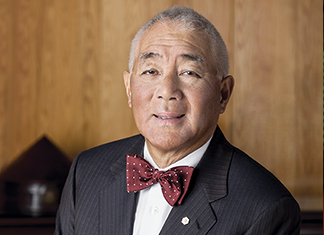PROSPECTS FOR CANADA
- Caifu Magazine | by Caifu Global
- EN

The internationalized RMB matters to Canada and Canadian companies because they stand to gain:
- Unrestricted offshore access to RMB trading, hedging and financing;
- Reduced supply chain costs;
- Increased bargaining power, more favourable and transparent pricing of goods;
- Lower transaction costs for foreign companies operating in China, or buying goods and services from China;
- Reduced barriers for business growth in China in the short and medium run;
- Greater investment choice and yield opportunities for offshore redback deposits in the medium and long run;
- Broader access to onshore buyers and suppliers;
- Reduced foreign exchange hedging costs for FDI and ODI;
- Ability to hedge RMB exposure;
- Diversified and competitive source of financing; and
- Eventual complete convertibility of a currency bound to continue appreciating.
The internationalization of the RMB is moving fast globally, with many recent developments. Taipei and Singapore won the rights to clear RMB in December 2012 and April2013.Also in 2013, working groups in Toronto reviewed plans to make the city first North American RMB hub in June, and the Mayor’s Office of San Francisco met for preliminary talks with PBoC executives to the same end in September. On June 18th and 19th, 2014, the PBoC designated the China Construction Bank in London and the Bank of China (BOC) in Frankfurt as official clearing banks for those hubs. Switzerland’s plans to establish a Swiss RMB hub, which was unveiled at around the same time as those of Britain and Germany in 2012, also appear to be moving along. The plans were discussed at a meeting between PBoC governor Zhou Xiaochuan and Swiss Finance Minister, Eveline Widmer-Schlumpf, in late June. On June 29,2014, the central banks of China and France signed a memorandum of understanding toward establishing an RMB payment system in Paris, a first step toward creating an RMB settlement hub. Plans are also underway to establish an RMB clearing bank in Australia in the coming months. New York is already an unofficial RMB centre. In all, business leaders and working groups in at least 12 cities have worked or are currently working on initiatives to promote their cities as RMB hub candidates. At least six of them joined the race in the past year, Vancouver and Toronto among them. The U.K. has already begun its planned sale of dim sum bonds, thereby becoming the first country to issue RMB-denominated bonds. The window of opportunity for Canada is closing rapidly.
Given the absence of an RMB hub in the Americas, RMB clearing and settlement is still green field in Canada and the rest of the world. The internationalization of the RMB gives Canada the chance to solidify its position in the region and improve its ties with China. Indeed, the agenda of Canada-China relations is in dire need of a new guiding framework after many years of quasi Cold War politics. China is Canada’s second largest trading partner and its share of trade is expected to continue to grow. Facilitated by the use of RMB, more Chinese investment and trade in Canada would likely follow. By utilizing the RMB, exporters and importers not only can reduce exchange rate risk, but can also use available financial products to hedge risk using the RMB. Network effects can be applied for currencies as well – that is to say, having a large number of hubs around the world should help to stabilize the redback. In the long run, Canada will be able to diversify risks and have access to additional sources of global liquidity other than USD-denominated products. In June of 2014, Canada’s Minister of Finance, the Honourable Joe Oliver, announced that talks are underway with the Chinese government on the topic of establishing an RMB trading hub in Canada. However, the Department of Finance has issued no further statement as to the progress of these talks and their future proceedings. The Chinese government and Chinese banks have been comparatively more eager to establish a hub in Canada. Outside of China, there is a lack of awareness or willingness on the part of businesses to embrace RMB settlement. In a Centre for International Finance and Integration survey of businesses in Australia, both Chinese and Australian companies asserted uncooperative business partners to be a major disadvantage to settling transactions in RMB, and indicated that they would increase RMB settlement if their business partners were more willing or knowledgeable about this option. The situation is similar in Canada, where the total number of clients using RMB is in the low thousands. Survey deployed by HSBC in April of 2014 found that only 5% of Canadian companies doing business with China settle their transactions in RMB, the lowest of 11 countries surveyed. The global average was 22%. More than half of Chinese companies indicated that they would be willing to give a discount to foreign companies choosing to settle trade in RMB. Banks may also have to accept some loss to help the RMB market in Canada grow. Around 37% of Canadian companies indicated they plan to start settling transactions in RMB in the future, above the global average of 32%.
According to the Toronto Financial Services Alliance (TFSA), the cost of operational changes from offering services in U.S. dollars to RMB is one of the concerns for the financial industry due to the potential lack of economies of scale since the level of liquidity demand in Canada remains low at the moment. However, as seen in the example of London, operational requirements of RMB liquidity and clearing capability for RMB products can be sourced through existing infrastructure like Hong Kong. The development of any new infrastructure could be explored only when the level of activities requires it in the medium to long term. In the long run, unless Canada meets with so much more demand from China’s other large trading partners in the Americas, a full RMB product development potential may still be hard to realize. Nevertheless, finance follows trade; as trade continues to grow between the two countries, financial links between Canada and China should grow stronger.
Key developments
Compared to the likes of London and Frankfurt, Canadian cities have been relatively late entrants in the race for RMB hubs. However, the province of B.C. has led the global effort to increase the availability and diversity of offshore RMB services in other ways. In 2013, the provincial government became the first and largest foreign sovereign bond issuer in the CNH market. Priced with a 2.25% interest rate, this one-year term dim sum bond was quickly oversubscribed. Nearly 60% of the investors were from Asia. Institutional investors in the United States made up the rest. The issuing of the dim sum bond suggests that the provincial government believes the internationalization of the RMB is underway. Accordingly, the government recognized RMB denominated bonds as a means to diversify its investor base, access new sources of global liquidity, and increase financial and economic ties with China and the rest of Asia. Other Canadian provinces, namely Alberta and Saskatchewan, are also considering issuing debt denominated in redback. If the hub proposal was to go ahead, and considering the bonds issued by B.C. were listed in Luxembourg, it is conceivable that future issuance of redback denominated securities could take place in Canada.
The TFSA has been spearheading an effort to discuss plans to make Toronto into an RMB hub with Chinese and Canadian banks since 2013. On June 2014, B.C. Minister of Finance Michael de Jong, told reporters that he planned to propose Vancouver as a location for the RMB hub alongside Toronto. In late August, 2014, TSFA and AdvantageBC further announced that they would work together alongside federal and provincial officials and the finance industry to promote Canada as an RMB hub. According to Minister de Jong, the working group is formulating toward a “pan-Canadian” approach that emphasizes Toronto and Vancouver’s respective strengths as Canada’s financial nerve centre and its gateway to the Pacific. Which city will handle the settlement is yet to be determined. The aim of the working group, for now, is for Canada to formalize its bid as fast as possible. Competition between the two cities would leave room for cities in the United States or elsewhere in the Americas to join the race, while emphasis on each city’s unique advantage strengthens the position of Canada on the whole.
However, though the two cities are currently working together, each city’s part in the collaboration remains unclear, as is the question of which will host the exchange. Because an RMB hub is not necessarily a physical space, but rather an integral component of a virtual infrastructure within the existing financial structure, companies across Canada would have access to financial services denominated in yuan regardless of where the hub is hosted, though it can create jobs directly and indirectly in the host city. There would also be a certain amount of prestige tied to being named Canada’s RMB hub, and it may be helpful for marketing purposes for Canada to have a clearly designated hub.
The China-Canada Economy and Finance Forum took place in Vancouver on June 6, 2014, organized by Fortune World. RMB hub benefits, offshore RMB developments, and related trends in the Chinese economy were discussed. On the same day, an amendment to allow Schedule III banks to register in B.C.’s International Business Activity Program (IBA) was put to force. Bruce Flexman, then-President of AdvantageBC, said during the conference that settling trading in renminbi would increase bilateral trade by $500 million dollars per annum.
B.C.’s Minister of Finance, federal and Ontario officials and representatives of the TSFA convened in Ottawa on Aug. 5, 2014 to discuss how to construct an offshore RMB centre and expand RMB business in Canada. At the forum, BOC-Canada (BOCC) president Wang Lijun gave a keynote speech highlighting granting business licenses in the Canadian market to BOC and other foreign bank branches as a key step toward the expansion of RMB business.
Limited clearing capacity already exists in Canada among Canadian and foreign banks. However, only a handful of Canadian banks have so far expressed interest to offer additional services or financial instruments denominated in RMB, most likely due to low demand and poor knowledge. The Bank of Montreal appears to have been the most proactive Canadian domestic bank in this regard. However, for now, international bank HSBC Canada is leading the charge. HSBC is already offering RMB services to more than a 1,000 clients, for a total value of a little more than 1 billion dollars. Overall, the volume of RMB transactions in Canada is around 15 billion dollars. In the case of BOC, RMB business volume in Canada has grown by 50% per year on average since inception. Canadian banks and insurers have formed a working group with several Chinese banks to work out the logistics of the trade infrastructure and convince the federal government that there is enough industry support and trade activity to support an offshore hub in Canada and sign a bilateral swap agreement. The BOC, ICBC and Agricultural Bank of China had expressed interest in expanding their operations in B.C., beginning in 2011, when the amendment to the IBA had first been indicated. The latter two had explicit views to establish a Schedule III bank branch in the western province. The events of June 6 will likely move this process forward.
Representatives of the Canadian Department of Finance met with their counterparts in the Chinese government in Beijing this past May. The establishment of an RMB hub was also likely on the agenda of the meeting of the Financial Sector Policy Dialogue in China that took place in October. Moreover, the Department of Finance has announced intentions to pursue a swap agreement with the People’s Bank of China (PBoC). However, the Bank of Canada’s position is still undefined as the matter is now political. The Governor of the Bank of Canada, Stephen Poloz, recently commented on the state of the U.S. economy and the internationalization of the RMB during IMF meetings in Washington, stating that emerging markets now account for more than 50% of the global economy, and that much growth taking place in the U.S. was the result of relaxed monetary policy. Poloz also asserted that the internationalization of the RMB would improve trade by saving companies money in foreign exchange fees. It may be possible that Bank of Canada is waiting for more trade to be settled in RMB before pursuing a swap agreement. Senior officials of the Bank met with the Secretary General of the PBoC’s monetary policy committee in Aug. 15, 2014, to discuss RMB internationalization and business in Canada.
China’s new ambassador to Canada, Luo Zhaohui, also voiced his support for the establishment of an RMB hub in Canada in an address given on June 8. Luo invited Prime Minister Harper to attend the 2014 Asia-Pacific Economic Cooperation (APEC) Leaders Meeting in Beijing in November. Such a stage would provide the perfect opportunity for the Canadian government to announce a swap agreement, or at least officially endorse Canada’s bid for the RMB hub.
Opportunities for Vancouver
Aside from taking initiative on the issue of dim sum bonds, the province of B.C. and the city of Vancouver have taken action to reinforce Canada’s ties with China and the Pacific in numerous other ways. These have been outlined in greater detail in the executive summary. B.C.’s Pacific initiatives would appear to be a natural consequence of geographic and historical factors. B.C. is located on the Pacific Rim. Vancouver and several of other municipalities in its metropolitan area have been the province’s major seaports and the landing site for most migrants entering Canada across the Pacific from the nineteenth century onward. Today, the ports and airports of B.C. facilitate tremendous amount of trade and migration between Asia and North America, and are in a position to increase the breadth and depth of their connection to Asian markets. Vancouver also has an incredibly diverse population of Pacific Asian-origin individuals with facility in Asian languages and personal and cultural attachments to Asia. B.C. has led every other province in Canada for several years running in Asia-Pacific Foundation surveys evaluating Canadians' warmth of feeling toward Asian countries and the idea of a Pacific regional system, as well as their receptiveness to increasing economic ties with Asia. In addition, Vancouver is the location of the head and branch offices of the Canadian branches of several Chinese banks, and will likely welcome more Section III branches of Chinese banks in the near future following a recent amendment to the province’s system of tax incentives for international business.
Beginning in the late 1970s, a number of development plans were issued by the federal, provincial and municipal levels with the aim of making Vancouver a “strategic city” of the Pacific Rim economy. To that end, these “gateway initiatives” broadly aimed to reinforce Vancouver’s natural and historical connection to the Pacific, as well as Canada’s ties to the region by extension. Economic initiatives ranged from economic delegations to Asian cities to provincial tax incentives for international business. There was also a subset of initiatives that aimed to take Vancouver’s role as Canada’s Pacific Gateway beyond the economic level. These included sister city arrangements, post-secondary programs for international students, Asian language and social studies education at the K-12 and post-secondary levels, efforts to maintain contact with alumni and professional networks in the Asia-Pacific, and improvement of transportation infrastructure that connect the economies of the Asia-Pacific and North America through B.C.’s Lower Mainland. Additionally, while the Federal Immigrant Investor Program (IIP) did not originate in or solely apply to B.C., it can also be considered a de facto gateway initiative due to the fact that Hong Kong investors destined for B.C. made up the overwhelming majority of program applicants in the first two decades of its existence, while affluent Chinese mainlanders similarly became dominant in the 2000s.
In July 2014, the IIP and Federal Entrepreneur Program (EN) were terminated by the federal government. This was due to the recognition that the investor immigrant program as originally designed provided little tangible benefit to the Canadian economy, while the entrepreneur immigrant category had largely failed to bring in individuals with ability to lead or drive innovation. The government intends to replace the IIP with programs that will contribute to the Canadian economy more meaningfully. The replacement for the EN, the Start-Up Visa, was launched in April 2013. The re-evaluation of these programs signals a shift of priority toward a more purposeful form of job-creation, designed to promote innovation and productivity necessary for Canada to compete in a decentralized global economy. B.C.’s International Business Activity Program was also amended in June 2014 to allowing foreign (Schedule III) banks to register in the program. The IBA, which established in 1988 as the International Financial Activity Program, allowed corporations registered in the program to claim a full provincial tax refund for international business activities. Chinese banks that expressed interest when the amendment was first indicated in 2011 experienced uncertainty later when no action was taken. With the amendment having gone into effect, the banks are now likely to establish Schedule III branches in Vancouver.
These recent changes are notable in light of several criticisms that Pacific Gateway initiatives have been subject to in the decades since their inception. Some of these initiatives have fulfilled original expectations, while others have fallen short. For instance, transportation improvements under the Asia-Pacific Gateway and Corridor Initiative (APGCI) have met many milestones as of 2010, and the Vancouver International Airport (YVR) has cemented itself as a major transportation hub for flights between North America and Asia, China in particular. However, the IIP, education programs and initiatives promoting Vancouver’s “social connections” to the Asia-Pacific are considered to be failing or, at best, difficult to assess.
Critics have stated that these so-called “soft” gateway initiatives rely on polishing Vancouver’s existing connections to the Pacific and lack a strategic mandate to increase Vancouver’s competitiveness as a destination for business among all the cities in the Pacific Rim. They further argue that measures aimed at creating or reinforcing Canada and Vancouver’s Pacific ties are based upon superficially similar premises, with little consideration to questions such as how economic and educational initiatives could be made to support each other systematically, or how the movement of goods, knowledge and wealth across the Pacific fits into a long-term plan to promote strategic growth and continual business opportunity for all the economies involved. For instance, critics observe that funds from the IIP in Vancouver went disproportionately into real-estate purchase and pre-planned construction “megaprojects” rather than to create opportunities for Canadians in trade, manufacturing or research. Recent statements made by the federal government upon the cancellation of this program confirm these observations. Additionally, investors were deterred from living or establishing permanent offices in Vancouver due to the comparative difficulty of accessing resources and markets in Asia, the government’s lack of attention on the social needs of immigrant-investors and tensions resulting by their impact on the urban community of the Lower Mainland, and a program structure that permitted – and to an extent, encouraged – migrants to maintain significant business networks and fixed capital investments in Asia.
Social scientists have observed that international alumni in B.C. are given little direction as to how their socialization can benefit the economic development of the province. Whether international students returning to Asia after their studies in B.C., or Canadian alumni residing in the Asia-Pacific are thought to be best positioned for this task, is also unclear. In addition, Chinese-Canadian business associations have indicated that many of their members prefer to conduct business through Asian cities, where they find considerably more opportunity to apply their particular skills and background. Likewise, the number of language programs has declined since the 1990s due to perceptions that students lack opportunity to apply their language education in the province. Even “hard” gateway initiatives are not immune from issues of community disengagement. A survey deployed on behalf of the Asia-Pacific Gateway and Corridor Initiative (APGCI) in 2009 showed that while residents of the Lower Mainland supported the development of a Pacific Gateway and the attendant economic growth in the region, few recognized that these objectives were already being carried out by the APGCI. Many who witnessed the implementation of APGCI projects in their neighbourhoods were unaware of their policy background and purpose. Respondents also expressed being confused by the plethora of public and private projects that have seem to have fallen under the “Pacific Gateway” heading. The outcome of these studies indicates that in order to substantiate its brand as Canada’s gateway to Asia, Vancouver, and by extension B.C., needs strategic developments.
Developments such as the closure of the IIP, amendment to IBA, and issuing of dim sum bonds indicate that the Province is willing to review the success of gateway initiatives with providing depth and long-term growth to the Canadian economy. They also demonstrate a commitment on the part of the government to assess why certain initiatives fail, and how they can be remade to support the Canada’s competitive position in light of changes in the global economy. The establishment of Vancouver as an RMB hub would represent an important step toward the consolidation of this new strategic outlook. The lowering of transaction costs has the direct consequence of putting Vancouver on the map for both Canadian and Chinese businesses as an advantageous place to locate commercial activities with China. As capital controls are slowly lifted in China, a large amount of domestic savings currently trapped in China could be invested abroad in the next few years. Chinese investors are likely to be drawn by higher interest rates and return on investments abroad, especially when factoring relatively low domestic interest rate inflation. In this context, reinforcing B.C.’s financial links with China could help the province finance the exploration and development of the province’s natural resources, particularly natural gas.
At present, Vancouver offer advantages such as outstanding liveability, geographic location, world-class transportation facilities, existing business and cultural connections with China, and myriad lifestyle amenities such as a multicultural and progressive population. The city also has a bourgeoning specialization in green technology and environmental services, and an overall start-up ecosystem that ranks 9th in the world. These are conditions that tend to attract international talent as well as high value-added industries and business services to a city. However, the fact remains that transnationally-minded businesses, by definition, have a whole world of possible business locations. There are other cities in the Pacific region that can offer unique advantages such as a better-known producer service sector and more mature connections to the global financial system. To compete, Vancouver needs to improve its case by further strengthening a business environment that supports the key sectors it aspires to host, maximizes the professional resources it has, and creates sufficient opportunity to encourage both industry and talent to stay in the city and grow.















